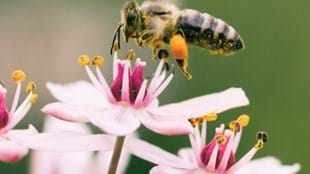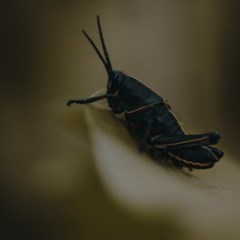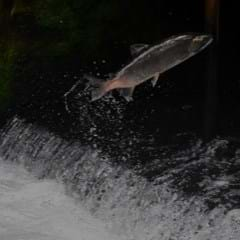We wouldn’t get far without bees – both wild and domesticated. According to the US Department of Agriculture, bees pollinate 80 percent of the crops we eat, including broccoli, apples, asparagus, blueberries, coffee, and some grass feeds for grazing animals. Bees are essential to our food chain. Managed stocks of European honey bees (Apis mellifera) provide the most benefit, but there is some suggestion that wild bees make up to 50 percent of those vital pollination services as well.
However, recent calls to “save the bees!” by installing honey bee hives on rooftops and in backyards are not the whole answer. Aside from the European (or Western) honey bee, there 20,000 different kinds of bee, and up to 12 other recognized species of honey bee worldwide. They are an effective pollinator, but there are countless other insects and creatures doing a similar job; we need to be concerned about all of them.
Bee abundance declined across 23 percent of US land area between 2008 and 2013.
As land becomes increasingly industrialized and ecologically homogenized, wild bee habitats decline, along with floral diversity. Bees are also affected by an increase in agricultural insecticides such as neonicotinoids. Many native bee species in the US are declining, and extreme weather in the UK last year meant a tough season for wild bees there too. One 2016 study found that bee abundance declined across 23 percent of US land area between 2008 and 2013. Future heatwaves could make things worse.
Bees are an effective pollinator, but there are countless other insects and creatures doing a similar job; we need to be concerned about all of them.
This doesn’t necessarily mean honey bees are in mortal danger, though. While honey bees have had their challenges (including declines across Europe and the United States, devastation from varroa mite and colony collapse disorder), they are a global, domesticated agricultural species and are not at risk of extinction (although they may require continual human intervention, such as supplementary feeding, to survive and remain effective pollinators).
Wild bees are the ones we need to worry about. Many species are less social, and therefore more vulnerable to changes in biodiversity, water shortages and pesticide. In fact, a new study shows that viruses infecting domestic honeybees are now spreading to wild bee species. But there are things we can do to help wild bees:
- Buy local food, organic if possible, to encourage and support growers in your community who focus on healthy soils and crops.
- Build a wild, natural, and diverse flowering garden, or in your rooftop planting boxes, to provide food for all insects.
- Plant the best flowers for bees – open, flat, single blooms or clusters of small flowers, which are the easiest for them to access.
- Let your lawn get a bit wild – bees love clover and dandelions.
- Plant out or pot up lots of bee-friendly crops, flowers, and herbs such as pumpkins, cucumbers, zucchinis, lavender, poppies, heather, mustard, sage, daisies, asters, berries, bluebells, honeysuckle, sunflowers, cosmos, hollyhocks, rosemary, thyme, cilantro/coriander, and borage.
- Add a shallow container of water (with stones and twigs for resting places) for bees to drink from.
- Double-check what commercial chemicals, insecticides, and poisons you’re using on your plants and property, and where possible focus on preventative care methods in the garden instead.
- Check out permaculture principles, like companion planting, soil enrichment, encouraging worms, and using cardboard to control weeds.
- Campaign for more wild space and wild plantings in urban areas, so bees and other insects can exist in more spaces than just locked-off islands of nature.
All of these strategies encourage other beneficial insects, too. And if you want to keep honey bees, do your research – sadly, according to one study, it may not necessarily help wild bees, due to the competition for nectar and pollen. That hasn’t stopped urban bee-keeping from taking off in the last few years, spurred by people wanting to feel more connected to the land and the natural world. You generally pay a fee to have hives live at your place, for which you receive a portion of honey at the end. The bees become your tenants.
If you get the balance right, backyard hives will help pollinate the edible and non-edible plants in your garden, greatly increasing their productivity. You (and your kids) will experience the pleasure and wonder of watching bees go about their extraordinary little lives. Your neighbors’ gardens will benefit too, and probably those in the surrounding streets. Best of all, you get raw, natural honey made from your own surroundings – a sweet annual return on your investment.
Just remember, the honey bee is a domesticated creature; our efforts to conserve bees should really focus on where it matters – out in the wild.
Naomi Arnold is a New Zealand-based author and writer specializing in environmental and health issues.








